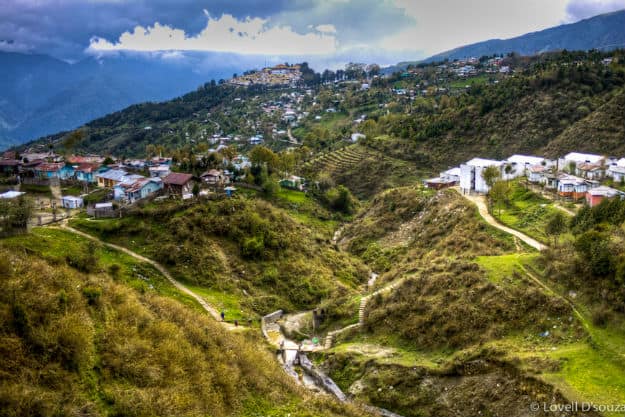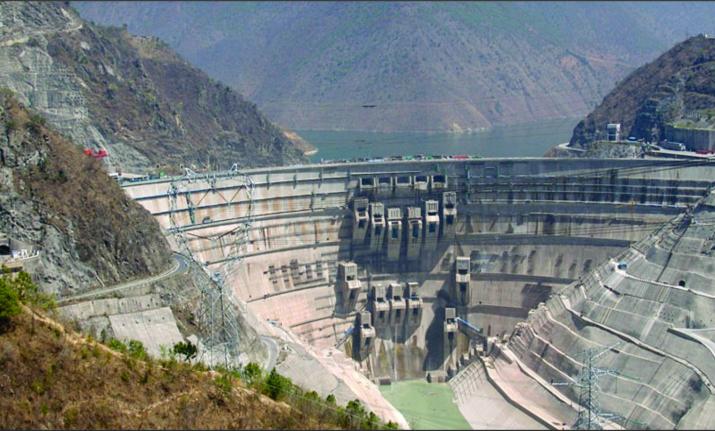Bhutan and India Governments has not been comlied with the implementation modalities for the 2560 MW Sunkosh Hydropwer Project. When Prime Minister Narendra Modi visited Bhutan in August 2019 the joint statement of both the governments said, that given the the huge benefits that would accrue to both countries from the 2560 MW Sunkosh, they agreed to finalize the implementation modalities for the Project at the earliest to enable commencement of construction.
However, it is exactly major differences over this implementation modality which has pushed the project into a deep quagmire.
It has been learnt that even after numerous meetings, including a recent one in October 2019, the Indian side still wants to adopt the Turnkey model whereby they want to hand over the project design and construction to an Indian Public Sector Undertaking company which will have full control with no Bhutanese role.
The PSU in question being considered by India maybe the National Hydropower Corporation of India.
The Bhutanese side is dead against this as this would mark a big departure from the current system of shared management control and more so because the course of the design and construction of Bhutan’s biggest hydro project would be out of Bhutanese hands.
The heart of the problem seems to be the opposing lessons that the Indian and Bhutanese sides have taken from the much delayed Punatsangchu I project.
The Indian side seems to be of the view that since there was shared management control in P I there was nobody really accountable and instead blame was being laid at the door of certain technical agencies like the consultants of the project among others.
The thinking in India is to implement Sunkosh in the same manner as hydro projects are done in India with a single PSU being in charge and accountable for everything from design to construction.
On the Bhutanese side the lesson learnt is that significant reforms and changes have to be made but the current joint management system must continue as it is a bilateral project.
One problem that has been identified by the Bhutanese side is that the Authority can meet only a few times a year and this delays decision making. Another issue is the need for more technical and qualified people.
A host of these issues were identified in Bhutan’s High Level Hydropower Committee Report which studied the issues under a microscope and in over three detailed reports.
The suggestion from the Bhutanese side is to have joint management control with the the key change being that the authority appointing an ‘Executive Committee’ of hydropower and technical experts and delegating it powers to manage the project construction and also take decisions.
Unlike the current system, there would be hire and fire powers and people would be hired and paid based on competence and fired for not being able to do a good job.
The High Level report had said that the current practice of appointing management teams by respective governments could be done away with and instead the governing bodies should agree to select and appoint professional management teams based on competencies and whose retention should be based on performance.
It calls for competitive selection processes in the selection and appointment of project employees, while there should be preference should be given to Bhutanese and to building local capacity.
With increased Bhutanese loan components in the GOI projects, the report calls for more active participation of the Bhutanese from the preparation of DPRs to the approval of DPRs to project financing and management. The Indian proposal would run counter to this too.
Bhutan has around 1500 professionals in the hydropower sector right from the Chukha days and they could be involved in the Sunkosh project.
One factor that the Bhutanese side has also looked at is that none of the hydro projects built in India by Indian PSUs have either been on time or within the budget. In fact, on an average Bhutanese projects have been completed much faster and in budget with the joint management system and with comparatively cheaper tariff rates.
The Bhutanese side has also had an unpleasant experience with Indian PSUs when it came to the four joint venture projects. Bhutan had agreed to the JVs with the anticipation that it would be faster and more efficient but the reality was the opposite.
From day one there were several issues with the PSUs making unreasonable demands that even violated the agreement between the two countries, refusing to come with their share of funding, fighting for additional control and many other issues.
The poor quality equipment supplied by Indian PSU BHEL in Mangdechu and other projects before it has also not inspired much confidence.
The Bhutanese position is that ultimately the project will be owned in Bhutan and stay in Bhutan and so it would be crucial to have Bhutanese management and people who will remain accountable.
Bhutan’s hydropower sector has also been roundly criticized by its own citizens for building much more projects than Nepal but still being behind Nepal in hydro skills and capacity.
The Sunkosh management control issue ultimately goes back to the P I project. The Indian side sees complete control by a PSU as a solution while for the Bhutanese it is equivalent to jumping from the frying pan into the fire.
However, if one were to take a closer look at the origin of the P 1 problem a major portion of the blame can be assigned to flawed technical advice given by the lead consultant and Indian PSU, Water and Power Consultancy Services (WAPCOS) and its partner Central Water Commission (CWC) which is also an Indian government agency that advises on civil works in P I.
A Joint Audit Report conducted by the Royal Audit Authority (RAA) of Bhutan and the Comptroller General Audit of India (CAG) for the period -April 2012 to March 2013 showed that the PHPA, its main consultant WAPCOS and the CWC knew that there were geological weaknesses at the right bank area but still went ahead with the tendering of the dam on the same site in 2009.
A geo technical appraisal report prepared by the Geological Survey of India (GSI) saying GSI had identified some weak geological features at the dam site was deliberated by officials from GSI, CWC and WAPCOS on 10th February 2009. The report pointed out that this may entail additional cost.
The GSI report also said that additional investigations were required for the exact delineation of the weak geological features.
However, Chief Engineer of Designs CWC in the 10th February 2009 meeting had said, “The only additional information is about the presence of shears and faults in the left and right abutment. These faults can be satisfactorily addressed technically but may entail additional cost. Thus the dam location and layout of various project components remain as shown in the tender drawings and no review thereof is warranted on geological considerations.”
So instead of conducting further investigations before awarding the tender, in what was both a cavalier and procedurally questionable manner, PHPA’s consultant WAPCOS, on behalf of GSI, issued a clearance for the project dam bids to be opened on 16th February 2009.
Finally, work was awarded by PHPA to the dam contractor Larsen and Toubro on 27th March 2009.
However, an investigation report conducted between 29th April 2009 and 17th September 2009 by GSI showed serious problems in the current right bank of the project.
After the first major slide in July 2013 CWC had claimed that it has the expertise and capacity to resolve the issue but two more slides occurred in 2016 and 2019 pushing back the project dates each time.
Bhutan’s High Level Committee Report in fact calls for the separation of consultants between project investigations and actual project implementation as the practice of retaining the same consulting firm compromises the possibilities for changes and innovations and is also a conflict of interest.
While Turnkey is the main issue both sides have also been discussing on the financing modality. The Bhutanese side is pushing for 70 loan and 30 grant to be given by India like in the current projects.
The Indian side has given options one of which includes 80 loan and 20 grant and another is a taking a loan from the EXIM bank in India.
The Bhutanese side is insisting on 70 and 30 and that while India can get the loan from any source it should be gotten by the Indian government.
The parameters of tariff negotiations for Sunkosh may also be a future matter to consider as the Indian side in the past had proposed changing some components of the tariff formula to bring down the tariff rate. A complication here is that the project will be an expensive one and tariff is usually cost plus and the cost also includes the cost of financing which may also be higher.
One proposal from Bhutan to control the cost of the project is for India to first release the grant component so that work can be done without any loan interest during construction.
Background
The Sunkosh project was announced as part of the 10,000 MW by 2020 project in 2008 but from 2009 itself the Indian side started voicing financing concerns for doing all 10,000 MW projects.
In 2014 September money for the Detailed Project Report for Kuri Gongri was put on hold.
Then in November 2014 when the then Indian President visited Bhutan an announced list of 5,050 MW projects included JVs but omitted Sunkosh and Kuri Gongri.
The former government then got into hectic diplomacy to revive these two projects. In 2015 and 2016 Indian officials offered the JV route for Sunkosh.
However, the Bhutanese side stuck to the Inter Governmental model. A big breakthrough was achieved when the Indian government in 2017 and 2018 in stories first reported by The Bhutanese agreed to the IG model for Sunkosh.











